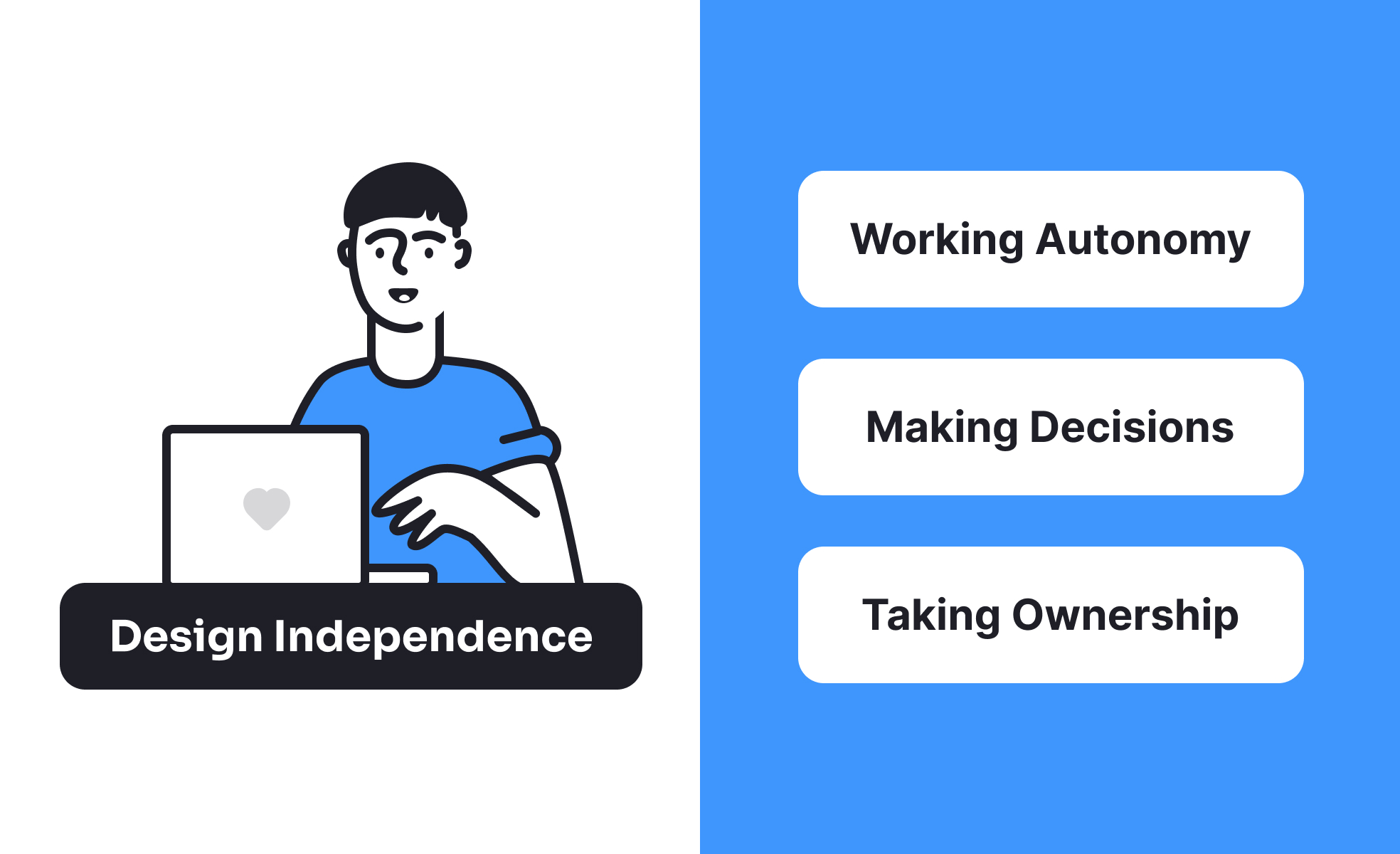Independence
Independence in design and product work is the ability of individuals or teams to make decisions and take ownership, leading to efficiency and accountability.

TL;DR
- Ability to work and decide without constant supervision.
- Encourages ownership and accountability in teams.
- Balances autonomy with collaboration and alignment.
- Supports efficiency, growth, and creative problem-solving.
Definition
Independence is the capacity of individuals or teams to act, make decisions, and deliver outcomes without requiring continuous guidance, while still aligning with broader product or organizational goals.
Detailed Overview
Independence is often viewed as a balance between autonomy and alignment. In product and design work, independence allows teams to move quickly and innovate while still staying within the boundaries of strategic direction. It prevents bottlenecks by reducing reliance on constant approval, but also requires trust and clarity to ensure decisions support overall goals.
One of the most common questions is whether independence means working alone. Independence does not exclude collaboration. Instead, it enables individuals and teams to contribute confidently without waiting for every step to be validated. A designer, for example, may propose and test interface ideas independently but still share findings with the team to confirm alignment.
Another frequent query concerns how to build independence within teams. Clear guidelines, documentation, and shared goals are critical. When teams understand the vision and constraints, they can make informed choices without escalating every decision. Establishing frameworks like design systems or product principles also empowers teams to operate independently within structured boundaries.
Independence is also linked to accountability. When individuals have the freedom to make decisions, they must also own the results. This accountability builds trust among colleagues and leaders. It also reduces micromanagement, freeing up leadership to focus on strategy instead of daily decisions.
A recurring concern is whether independence risks inconsistency. Without shared standards, different teams might make conflicting choices. This is why independence works best when paired with strong communication and alignment practices. Regular check-ins, shared documentation, and collaborative tools ensure that independent actions still support the broader system.
Finally, independence is tied to growth and motivation. When employees or teams feel trusted to act, they develop confidence and new skills. Independence encourages experimentation and problem-solving, which leads to innovation. At the same time, knowing when to ask for input is part of maturity; true independence involves recognizing when collaboration will strengthen outcomes.
No. Independence means having the confidence and authority to act without needing constant direction, but collaboration remains essential. Independent contributors still share progress, seek feedback, and align with the team. The distinction lies in not being blocked by waiting for constant approval.
In practice, independence and collaboration strengthen each other. Teams that empower individuals to act independently often create stronger group outcomes.
By providing clear goals, principles, and documentation. A strong design system or product framework gives teams boundaries to act within while ensuring consistency. Regular check-ins prevent drift but should not become micromanagement.
The key is balance: enough structure to guide decisions, but enough freedom to encourage ownership and speed.
Independence and accountability go hand in hand. When individuals make decisions, they must also accept responsibility for the results. This accountability fosters trust and reliability across teams.
Accountability also ensures that independence does not lead to fragmented or conflicting decisions. Clear ownership of outcomes creates a cycle of trust and responsibility.
Yes. Without shared standards or communication, excessive independence can result in inconsistencies and siloed work. Teams may duplicate efforts or create conflicting solutions.
The best approach is structured independence, freedom within a shared framework. This allows for speed and creativity without sacrificing cohesion.
Independence builds confidence, problem-solving skills, and adaptability. When trusted to act, individuals stretch beyond their comfort zones and develop professionally. For teams, independence fuels creativity and innovation by encouraging members to test ideas and iterate.
Growth also comes from knowing when to seek input. Independence is not isolation; it is the ability to act while understanding when collaboration adds value.
Recommended resources
Courses

UX Research

HTML Foundations









